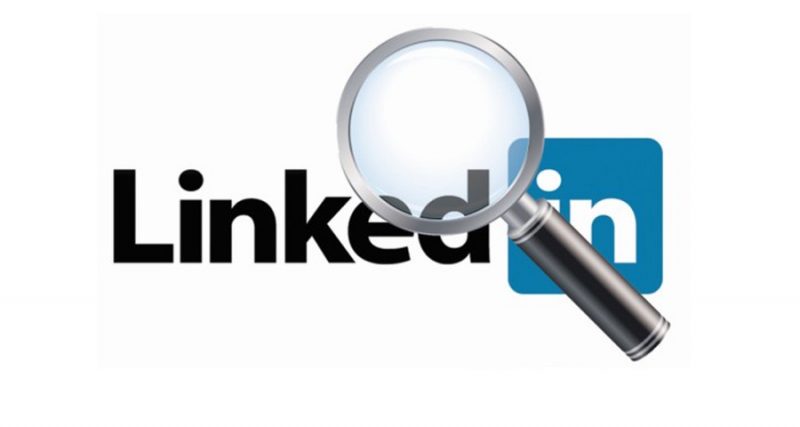By now you know that LinkedIn, the world’s largest professional network, is the best online tool for B2B prospecting and finding your ideal clients. But many people fumble about the site, not quite sure what to do, so they begin by connecting to the people they know, such as friends and family. Now what?
Step 1: Make a wish list of companies you want to do business with
After making your list, use the search box to find their company page. I’ll use an example of a commercial cleaning company prospecting for local banks. They’re trying to find a way in but don’t know any of the players. After finding the company page, click on the yellow Follow button, to start receiving notification of their company posts. This will keep you connected and up to date on what is happening with their company.
Step 2: See how you’re connected
 Next, look at “How You’re Connected” to see if you have any 1st, 2nd or 3rd degree connections. If you do, take a look at these people to see if you know any of them personally. If so, you could contact that person either through LinkedIn or by picking up the phone and requesting a third party introduction to the person responsible for hiring cleaning services — or perhaps to a person in the company who would know who that decision maker is.
Next, look at “How You’re Connected” to see if you have any 1st, 2nd or 3rd degree connections. If you do, take a look at these people to see if you know any of them personally. If so, you could contact that person either through LinkedIn or by picking up the phone and requesting a third party introduction to the person responsible for hiring cleaning services — or perhaps to a person in the company who would know who that decision maker is.
If you don’t have any close connections to the company, click on the “Followers” link next to the yellow Follow button, and you’ll see everyone that is following company updates. Most likely, key company employees will be following their own company status updates.
Step 3: Look for common ground
Start looking at the profiles of key players in the company that you could potentially connect with. In the example below, I’ve found a company Vice-President, and see that he has advanced non-profit fund raising skills. If I were active in any local non-profit activities, I might keep this in mind if I’m in need of any advice regarding fund raising for that non-profit.

As you review the profile, also pay attention to companies they’ve worked for and educational institutions they’ve attended. Perhaps you’ll spot a common connection. If they belong to any Associations such as the local Chamber of Commerce, send an invitation to connect and mention the common membership. This also applies to any common networking or volunteer organizations you both may belong to. Most people will accept your invitation to connect if you mention something you have in common.
And finally, look at the LinkedIn groups they belong to. In the example below, this person belongs to a group called “Hockey players doing business together”. Since we are in Minnesota (the land of hockey), you just might have found a common interest, and could join the group and start building a relationship with not only this particular prospect, but other members of the group.

As you can see, LinkedIn can be a very powerful tool for prospecting and finding your ideal clients. But it’s not simply a numbers game where you go through and collect as many names as you can in order to blast them with sales pitches. Rather, it’s a slow moving process of building meaningful connections with targeted prospects.
Once you’ve connected with these prospects, begin engaging them by following the 4-1-1 Rule, which is a concept created by Tippingpoint Labs and Joe Pulizzi of the Content Marketing Institute. This is a concept originally created with Twitter in mind, but it can be applied to all social media status updates. The concept is that “for every one self-serving tweet, you should retweet one relevant tweet and most importantly share four pieces of relevant content written by others.” This way, your followers won’t feel bombarded with desperate attempts at selling them your products or services. Instead, they’ll see you as a helpful resource that always provides relevant, useful information. And when the time is right, it’s YOU they will contact.
Original Source: http://www.ducttapemarketing.com/blog/2014/05/15/linkedin-finding-ideal-clients/





Leave A Comment